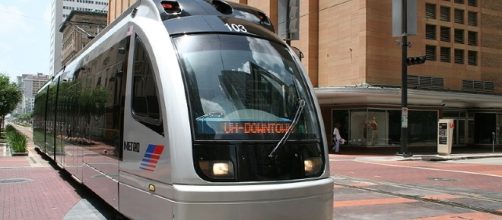According to a recent article on Crain’s Houston, the Metropolitan Transit Authority of Harris County is contemplating what it should do next with the light rail system that extends north through the Houston Medical Center and Downtown with branch lines that extend south-east, covering among other places the University of Houston Central Campus. The current system, especially the main red line that extends north to south, has been more successful than its supporters had hoped for when it first went into service in 2004. Ridership is booming, and economic development has been proceeding apace along its route.
How the light rail changed the way Houstonians travel
Before the light rail line, visiting the Medical Center and downtown could be a trial. There was already a bus service in place, but trip times tended to be lengthy. Travel by car was a trial due to both traffic and premium parking.
Now, anyone can drive or take a bus to the Fannin South Park and Ride, for example, and then take the train either to a doctor’s appointment in the Medical Center or to a job or business meeting downtown. The train service is quick and frequent, and one saves time and the expense of trying to find parking. The Houston red line is a living argument in favor of mass transit, unlike some systems in other parts of the country which have proven to be expensive to operate,
Expansion plans
Houston Metro, as the Metropolitan Transit Authority of Harris County is often called, is mulling some development plans for the light rail system.
One of the more sensible ones would be to extend the lines north toward the George H. W. Bush Airport and southeast toward Hobby Airport. Travel to each airport by car is an aggravation, because of distance, traffic, and parking issues. Bus service exists to each airport, but the light rail would be alternate, quicker option.
Other expansion schemes involve connecting the light rail system to a planned high-speed rail line between Houston and Dallas, and to a proposed commuter rail line that would connect to Missouri City in Fort Bend County. Another line, the so-called Blue or University Line, which was scotched by popular and congressional opposition, may be revived as well. The Blue Line would extend west from a transfer point downtown through a number of neighborhoods to a transfer center in the western part of Houston.
Residents and business owners, supported by Rep. John Culberson, R-Texas, opposed the line due to its disruptions during the construction phase.
The purpose of these plans is to attempt to alleviate traffic congestion and harmful environmental effects caused by automobiles. However, how light rail expansion might be affected by the advent of driverless cars may not have been properly evaluated.


